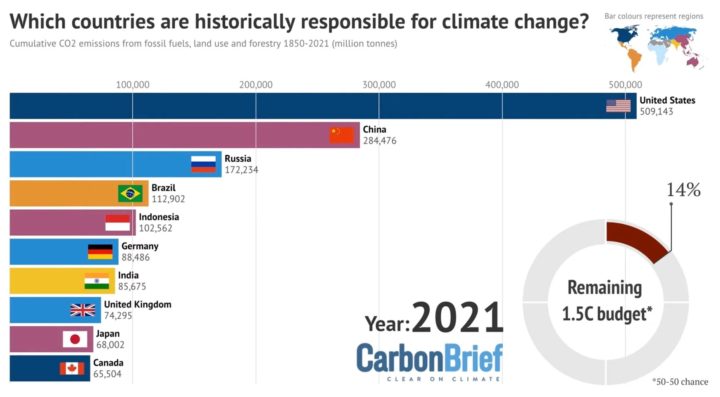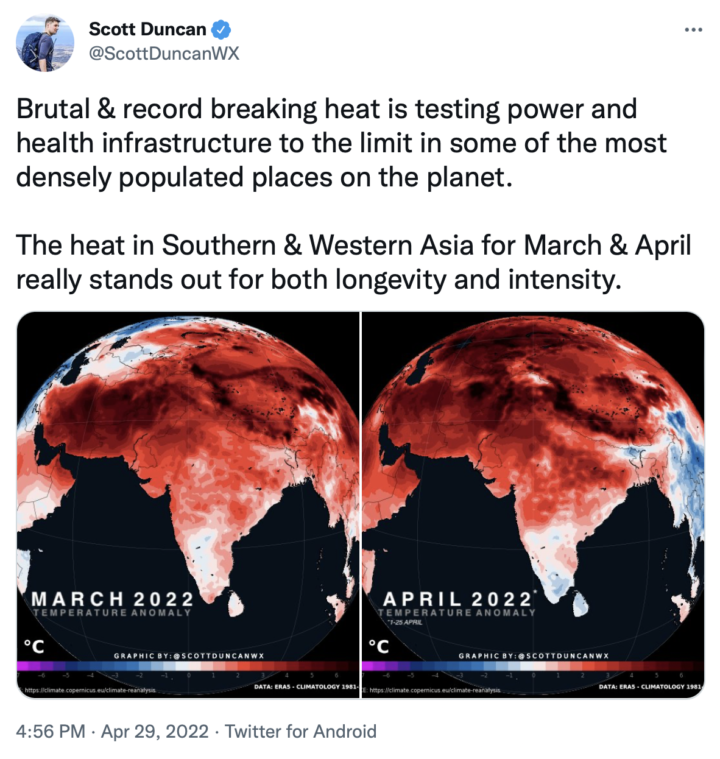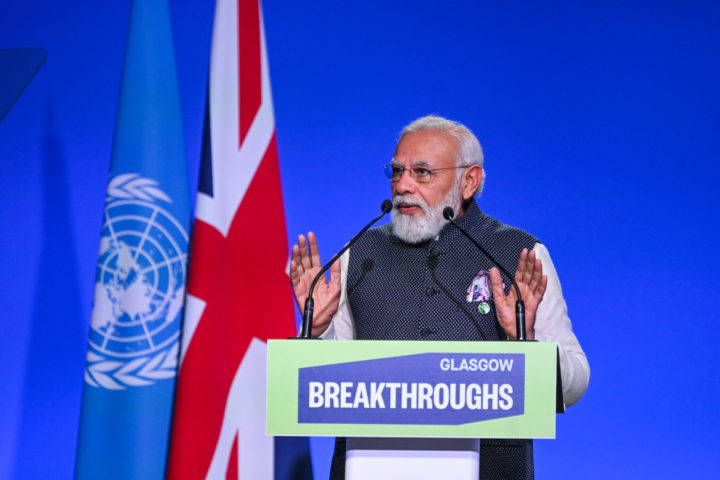India - net zero hope amid heatwaves
As extreme heat hits India earlier in the year than expected, bilateral deals with the UK and Germany offer support for delivering India's net zero ambition

By Gareth Redmond-King
@gredmond76Share
Last updated:
Why India is key to global net zero
With a population of 1.4 billion people, the world’s fastest-growing economy, and 70% of power generated using coal, India is a major emitter.

It ranks third in the world, behind China and the US. Like China. Its per-capita emissions are lower than developed nations – the lowest in the G20. But despite not having emitted for as long as more wealthy countries, by 2021 India had become the seventh biggest emitter cumulatively.
But India is also on the frontline of climate impacts.
Extreme heatwave
In February, the Intergovernmental Panel on Climate Change (IPCC) published its latest assessment of climate impacts. It warned they are worse than thought and worsening so quickly we risk missing “a brief and rapidly closing window of opportunity to secure a liveable and sustainable future”. There are solutions, and existing climate leadership in the race to net zero, but the IPCC is clear that action needs to be swift.

Two months on, and nearly a fifth of the entire global population has been experiencing a frighteningly early and severe heatwave, with temperatures in India and Pakistan climbing as high as the mid-to-high forties Celsius – levels rarely, if ever, recorded in April before.
Extreme temperatures like this kill people, in and of themselves. Combined with high humidity, (which mercifully the current heatwave is mostly not) they would be deadly on an even wider scale, as temperatures hit the threshold beyond which humans can no longer sweat to cool down.
But the temperatures do wider harm. Right now:
- they are causing power outages – as long as seven or eight hours at a stretch. Along with the other problems that causes, it removes the possibility of cooling buildings;
- they are harming food crops, with wheat yields in worst-affected areas falling by half – coinciding with disruption to global food supply chains from Russia’s invasion of Ukraine, both of which are major grain producers; and
- they are threatening water supplies – drying up reservoirs, and speeding the melting of mountain glaciers, throwing the threat of floods into the mix.
India is a developing nation, its cities densely populated, and still with high levels of poverty. Many more people are exposed to harm than is the case in wealthy nations with stable power supplies, better and more reliable housing, sanitation and health care.
India’s bold pledge to be net zero by 2070

Despite overall progress at COP26 in Glasgow, there were too few leaders offering ambitious new pledges.
India stood out, then, with a bold commitment to be net zero by 2070. That sounds further off than the more usually heard 2050. But the Paris Agreement seeks net zero by mid-century, with clear acceptance that developed nations get there first, supporting developing nations to get there in the later part of ‘mid century’.
Ambitiously, India seems to have committed to net zero greenhouse gas emissions, not just carbon dioxide, and is aiming for half of all power generation from renewables by 2030.
Although they have not yet formally submitted a new NDC, signs for delivery seem good – not least Mumbai’s commitment to get to net zero 20 years earlier than India as a whole. Almost all new capacity added to India’s power grid in the last financial year was renewables, backed by a $1.6 billion investment in grid infrastructure.
Financial assistance
Lest we forget, though, wealthy nations promised $100bn a year in climate finance by 2020 – which they have yet to deliver. Rameshwar Prasad Gupta, Indian environment minister, made clear in Glasgow that India’s net zero target is conditional – that the country needs considerable financial support to achieve it.
Some new support has been forthcoming. Ahead of COP, the UK announced a $1.2 billion package of public and private finance to ‘help drive India’s green growth’. In Glasgow, the UK also provided a sovereign guarantee to unlock $1 billion of World Bank lending for clean infrastructure in India.

Also last year, India was allocated nearly $18 billion in special drawing rights (SDR) in the International Monetary Fund’s $650 billion post-covid recovery SDR allocation. This is not targeted at climate action, but was billed as being about ‘building back better’.
And more recently, Germany committed ‘at least’ €10 billion in new and additional support to India as part of a partnership for ‘green and sustainable development’. This for action over this decade, to deliver towards India’s goal of 50% power from renewables by 2030.
Deals and partnerships
These follow a similar approach to the deal with South Africa, announced at COP26, which the US, UK, EU, France and Germany struck to provide $8.5 billion to drive decarbonisation – particularly targeting coal. Since COP, other nations have sought similar arrangements – including Indonesia and Viet Nam, both heavily reliant on coal.
Whilst this approach may be increasingly important in the near future to unlock decarbonisation and new climate finance, it is complicated by the dramatic shift in geopolitics since COP. As Europe ramps down its reliance on Russian fossil fuels, so India has defended buying more. Coal shortages and heatwave outages are driving up domestic coal production to try and plug the gap. And in meetings with UK and German leaders, Narendra Modi has steadfastly called for peace, rather than condemning Russia’s military aggression.
But one thing is clear, both from the science and the dangerous heat in India and Pakistan: the impacts and costs of not acting on climate, are far higher than those of acting. Another reason why we might expect to see more in this vein, and more climate action from India.
Share